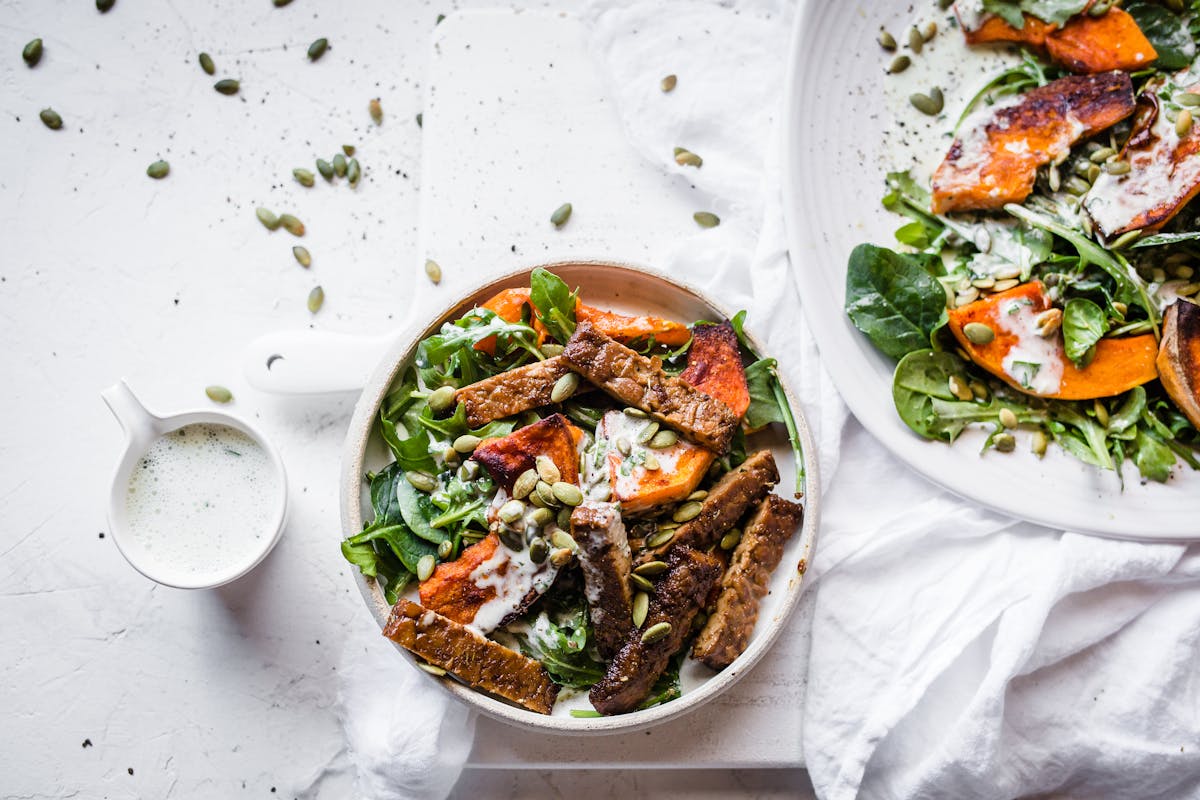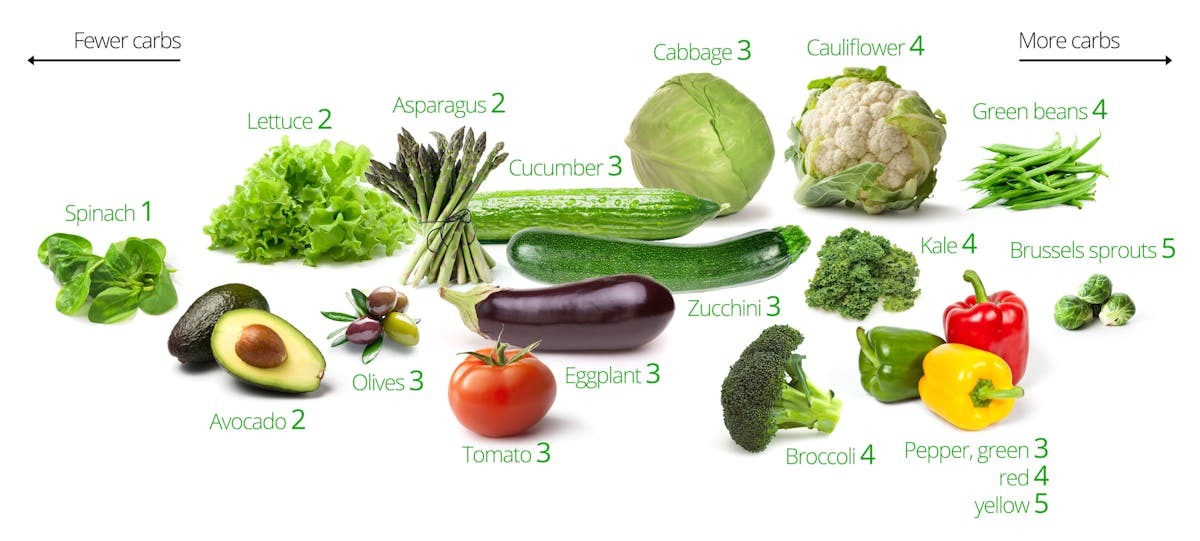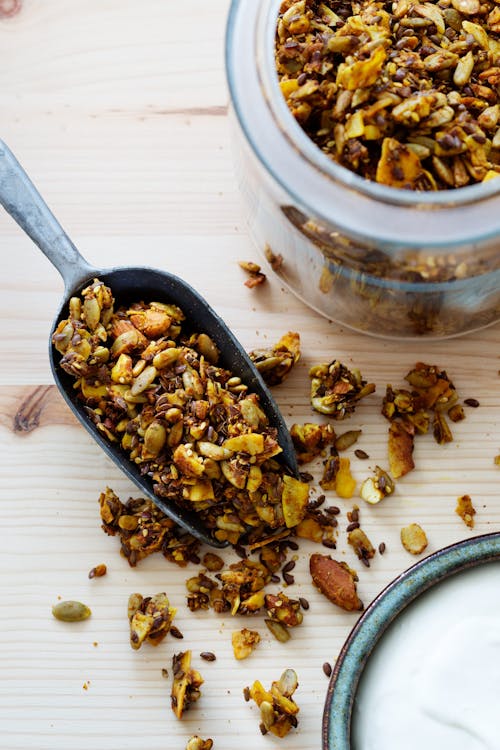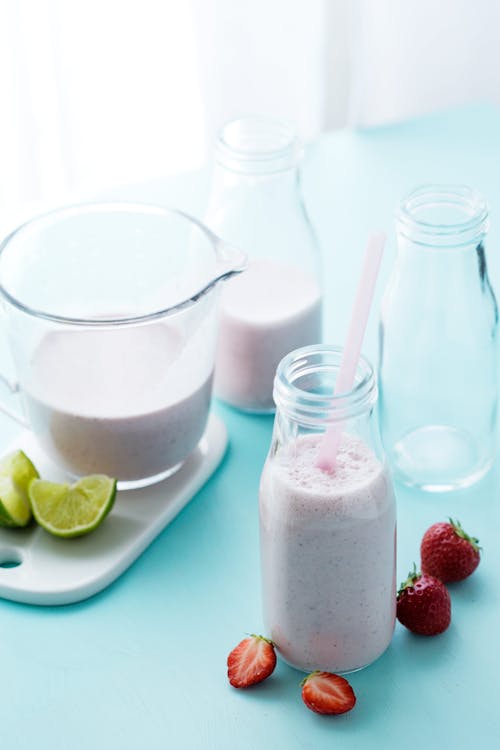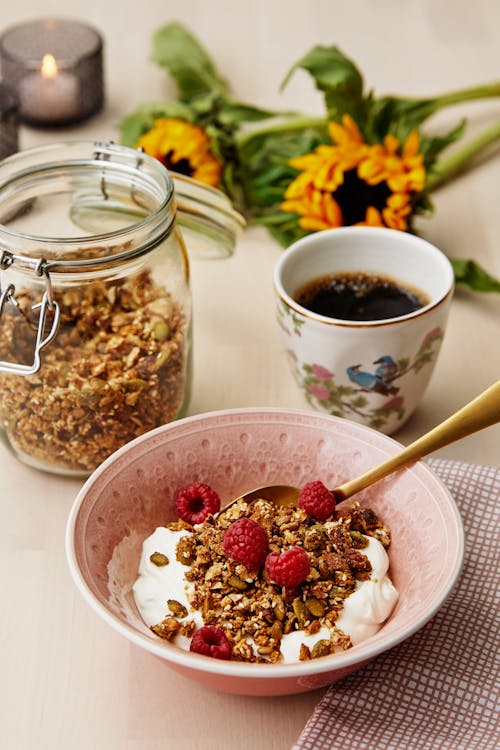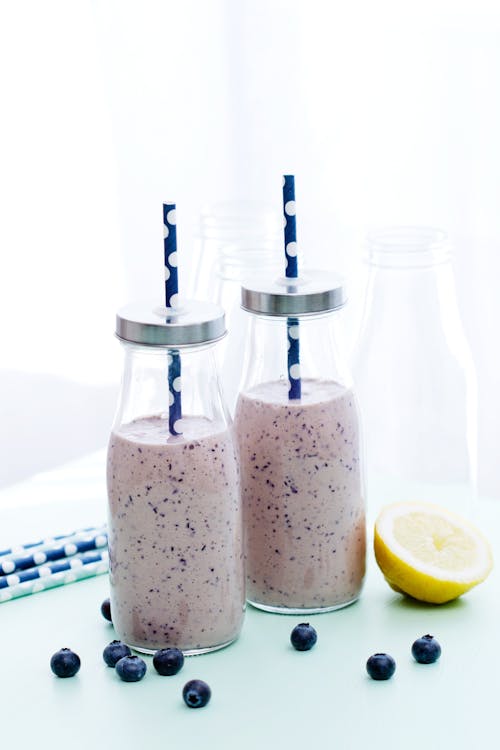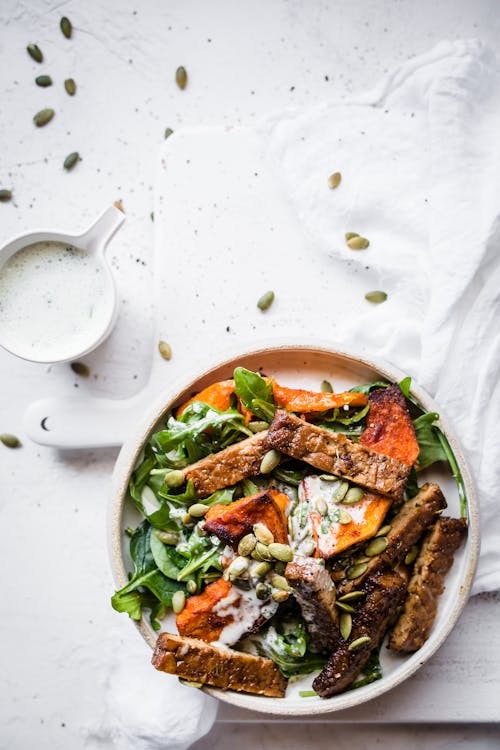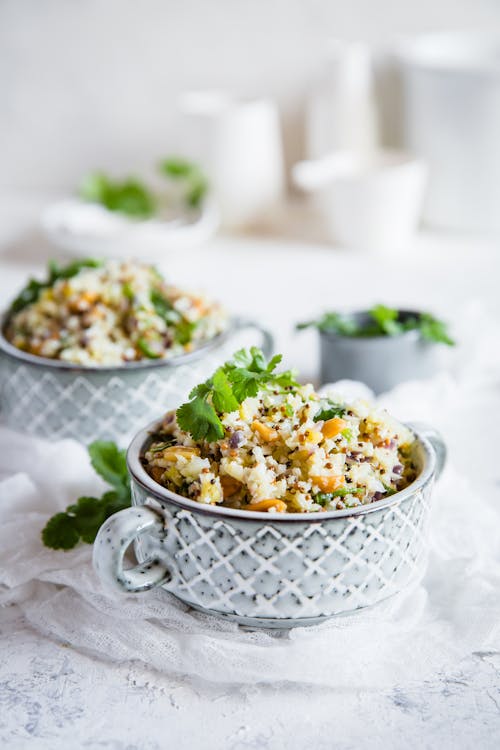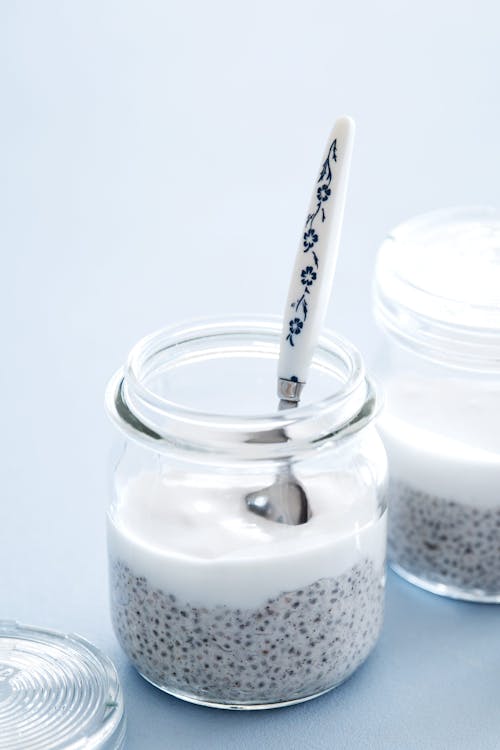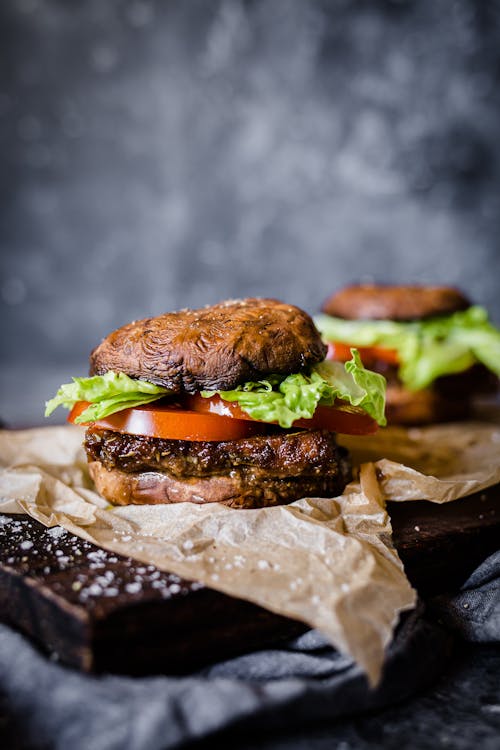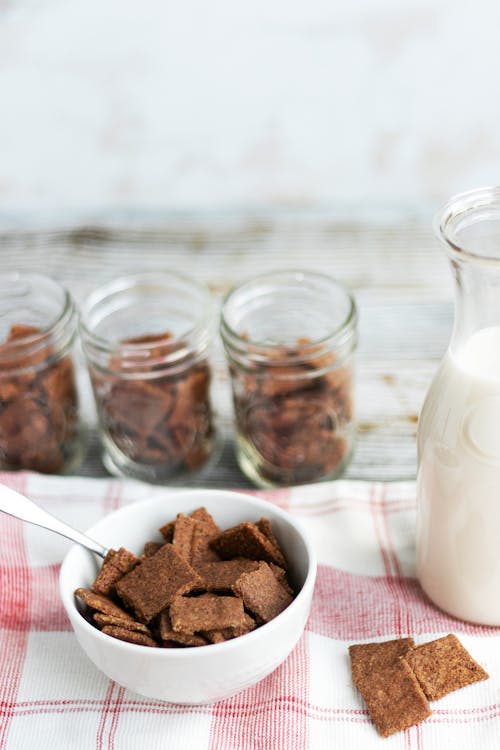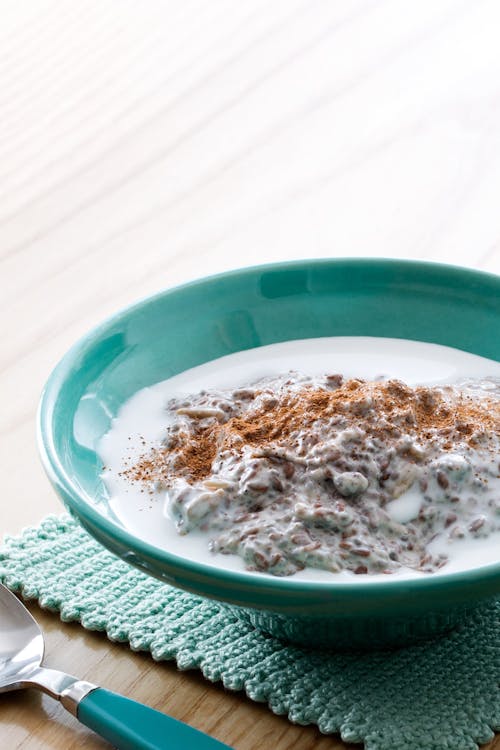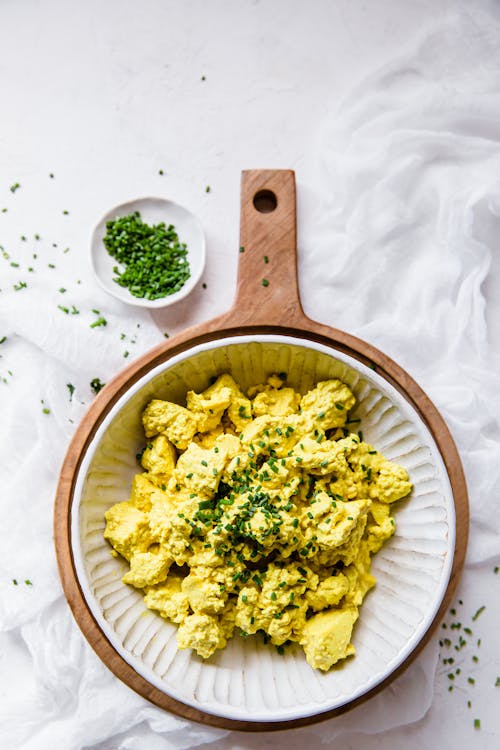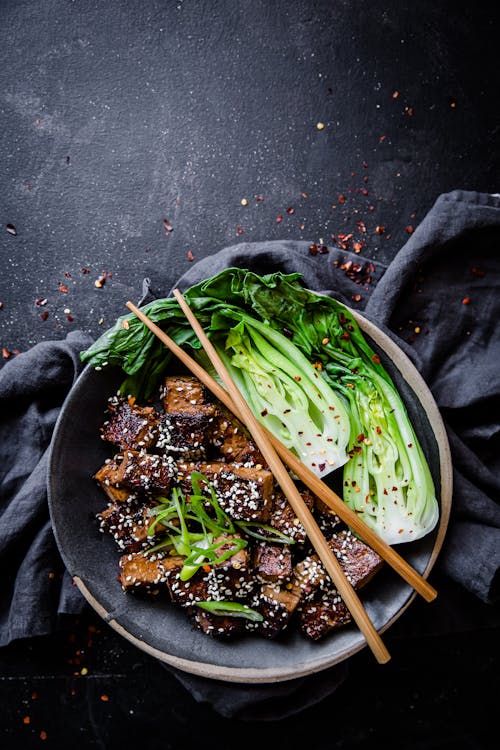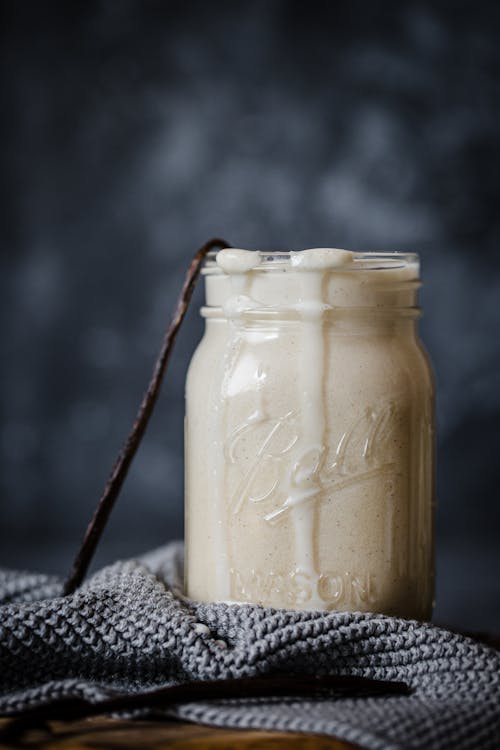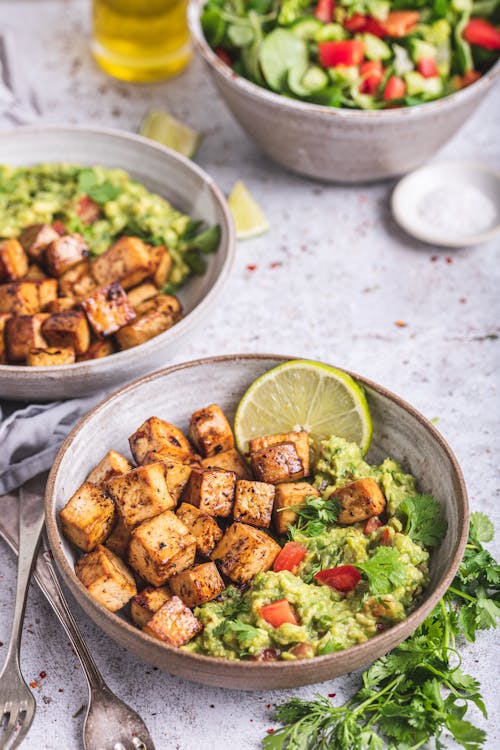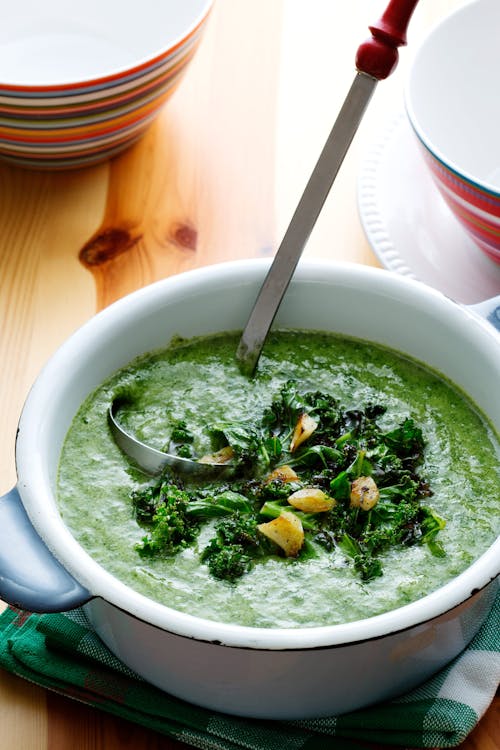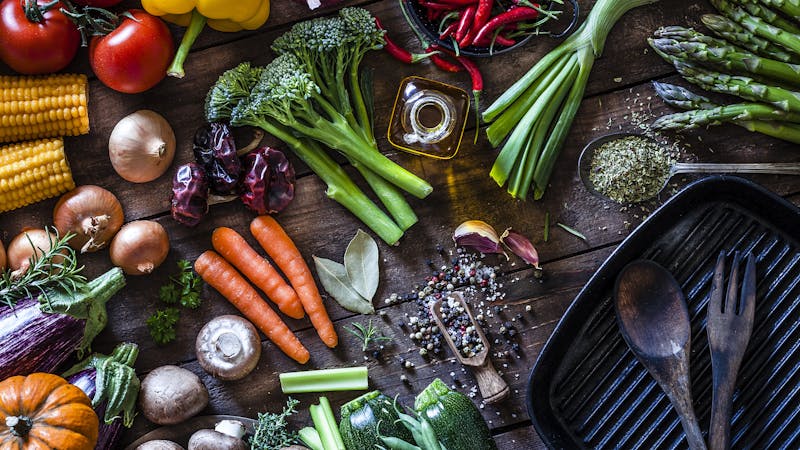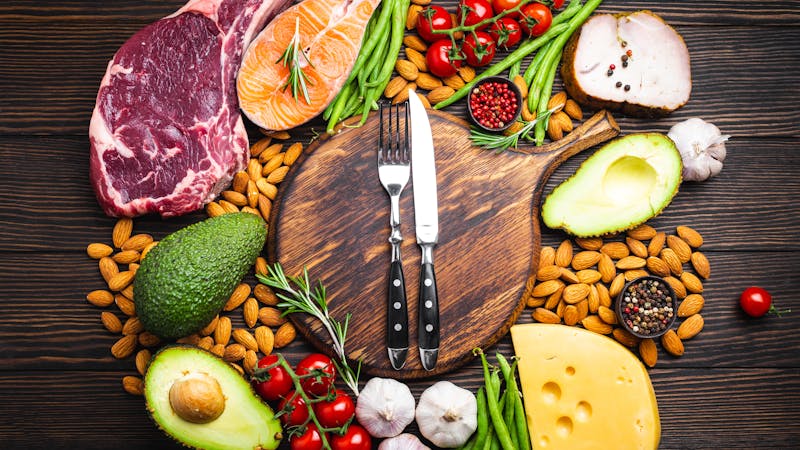How to eat low carb as a vegan
At Diet Doctor, we believe everyone, no matter their dietary patterns, should be given the opportunity and information needed to live their healthiest, low-carb life.
For practicing vegans — who may have wondered whether they can realistically maintain their lifestyle while eating low carb or keto — we’re here to tell you that it is absolutely possible.
With the right approach — and when following reliable advice — you can adhere to a vegan diet, which typically excludes all animal products, including dairy and eggs, while also eating low carb or keto.
For more information on how you can successfully combine veganism and low carb into one healthy, sustainable diet, keep reading.
What is a vegan diet?
A vegan diet contains no animal products. Unlike some vegetarians, vegans don’t eat eggs or dairy products. Those on a vegan diet also avoid animal-based ingredients like gelatin, which is made from bones and hides.
Is being “plant-based” or vegetarian the same as being vegan? Not always. Although the terms are sometimes used interchangeably, they mean different things.
Also, a vegan or vegetarian diet is not automatically a nutritious diet. For instance, white bread, cane sugar, refined flour crackers, and desserts can all be vegan or vegetarian.
Definitions of plant-based diets vary. Although they all focus on vegetables and other plants, some may include small amounts of animal foods.1
People typically choose a plant-based way of eating for health, environmental, or ethical reasons.2 For some or all of these same reasons, vegans do not use animal products, including clothing and other items made from animals, like wool, leather, or suede.
Why combine vegan and low carb?
Eating both low carb and vegan may sound strange at first. Vegan diets have no animal products and may be relatively low in fat while being high in carbs. Keto or low-carb diets typically include animal products and provide plenty of fat with very few carbs.
But you can stay vegan while experiencing the benefits of living a low-carb life. One of these benefits is feeling less hungry, which can lead to greater weight loss compared to other diets.3
Other low-carb benefits are better control of diabetes and insulin resistance, blood pressure reduction, and many others you can read about in our guide to the science of low carb.4
Note: We don’t think that eating animal products is necessarily unhealthy. You can learn more about this in our guides to red meat, dairy, and saturated fat. However, we do want to help everyone, whether or not they choose to eat animal products
.
Research on low-carb vegan diets
Well-planned vegan diets based on nutritious whole foods can provide adequate protein and most – although not all – of the vitamins and minerals needed for good health.5
Do a quick search online and you’ll see inspirational stories from people who successfully follow a low-carb or keto vegan lifestyle, including one from spine surgeon Carrie Diulus, who has type 1 diabetes.
But, except for a two-part clinical trial that explored an “Eco-Atkins” approach, low-carb vegan diets haven’t been studied much.
In that study’s initial four-week phase, 47 overweight people with high cholesterol levels were randomly assigned to follow either a lower-carb vegan diet or a higher-carb vegetarian diet that included eggs and dairy.
Both groups were calorie-restricted, and although weight loss was similar, the lower-carb group had greater reductions in heart disease risk factors. Another plus: people in the lower-carb vegan group seemed happier with their diet.6
During the second part of the study, each group was allowed to eat as much of the permitted foods as they wanted. At the end of six months, the lower-carb vegan group had lost slightly more weight, raised their HDL cholesterol, and lowered their LDL cholesterol and triglycerides more than the higher-carb vegetarian group.7
Like many nutrition trials, this was a fairly small study with a high dropout rate. Also, the lower-carb group wasn’t that low carb; daily intake averaged about 100 and 140 grams of carbs in the first phase and second phases, respectively. But the results show following a low-carb vegan diet is possible and may help improve certain heart disease risk factors.
Top five tips for a low-carb vegan diet
If you’re eager to find out what to eat on a low-carb vegan diet, check out our complete food list. But don’t forget to come back to this section before starting your low-carb vegan lifestyle.The hardest part of being on a low-carb vegan diet is meeting all your essential nutrition needs.
But don’t worry. We’ve put together our top five tips for getting started.
1. Prioritize protein
Getting enough protein is essential, and on a vegan diet, it’s even more important, because protein quality matters as much as quantity.
Here’s why. After you eat, your body breaks down the protein from your food into amino acids, the “building blocks” of protein. Although there are 20 amino acids found in protein, 9 are essential, meaning they must come from your diet because your body can’t make them.
Protein from animals is “complete,” providing all the essential amino acids in amounts your body needs. But plant proteins (with the exception of soy and nutritional yeast) are “incomplete,” because they lack sufficient amounts of one or more essential amino acid.8
The good news? Combining different types of plants can provide all the essential amino acids in the amounts required.
The bad news? Reducing carbs means limiting several food combinations that provide “complete” protein. For example, vegan diets often pair legumes like beans or peas – high in the amino acid lysine but low in another, methionine – with grains that are high in methionine but low in lysine. Carb-heavy combos like these aren’t a good fit for a low-carb diet.
Check out our low-carb vegan protein sources to choose high-quality protein without overdoing carbs.
Now for “quantity.” Aim for higher protein intake if you’re getting your protein from plant sources.
Plant-based proteins are less easily digested and absorbed by the body compared to animal proteins.9 For this reason, you may need more protein if you follow a vegan diet compared to a non-vegan diet.
Soy protein is comparable to animal protein in terms of quality and digestibility, while other plant proteins vary. Vegans who consume soy regularly may not need much more protein than those who eat animal products, while those who avoid it may need approximately 30% more.10
You can learn more about the differences in plant and animal protein quality in our podcast covering this issue.
How much protein do you need on a low-carb vegan diet? Use the simple chart below to find out what your minimum daily protein target should be, based on your height.11
At Diet Doctor, we recommend that most people aim for 1.2 to 2.0 grams of protein per kilo of reference body weight. The goal below represents the middle of that recommended protein intake range.
| Height | Women | Men |
|---|---|---|
| Under 5’4″ ( < 163 cm) | 90 grams | 105 grams |
| 5’4″ to 5’7″ (163 to 170 cm) | 100 grams | 110 grams |
| 5’8″ to 5’10” (171 to 178 cm) | 110 grams | 120 grams |
| 5’11” to 6’2″ (179 to 188 cm) | 120 grams | 130 grams |
| Over 6’2″ (188 cm +) | 130 grams | 140 grams |
It’s also important to spread your protein throughout the day instead of eating most of it in one sitting. That’s because your body uses protein best when you eat a minimum of 20 grams at a time, though you probably don’t need more than 35 grams.12
Is there a maximum amount of protein your body can absorb at one time? Although that amount isn’t agreed upon by all nutrition experts, in order to meet your protein needs with plants, aim for about 25-35 grams at each meal.13
Our list of low-carb vegan protein foods shows you how to get the right amounts of the right kinds of plant protein.
2. Count your carbs
Which is healthier and easier to follow long term: a low-carb vegan diet or a keto vegan diet?
Although keto vegan diets are popular, they don’t allow much flexibility. For some, eating this way all the time can make it difficult to meet essential nutrition needs. A low-carb vegan diet, as opposed to a vegan keto diet, includes more foods — such as beans and other legumes — making it easier to get the nutrition you need and stick with this plan long term.14
Most vegan diets are high in carbs because they include lots of grains and legumes. By contrast, a low-carb vegan diet can provide anywhere from 30-100 grams of net carbs per day, depending on how strict you want or need to be. 15
Feel free to include keto meals like our vegan tofu scramble or even full keto days on a regular basis if you desire! If you have diabetes or want to lose weight, aim for less than 50 grams of net carbs most days in order to maximize results.16 If you don’t have diabetes, you can experiment with eating different amounts of carbs until you figure out what works best for you.3. Eat healthy fats
On a low-carb diet, fat provides most of your calories, and a vegan version is no exception. In fact, another name for your new way of eating could be low-carb, high-fat vegan, or LCHF vegan.
Unlike protein and carbs, we typically don’t specify how many grams of fat you should consume. Instead, we recommend adding enough fat at each meal to feel satisfied but not stuffed.
You can enjoy several healthy, tasty plant fats on a LCHF vegan diet, including olive oil, avocado oil, macadamia nut oil, and coconut oil or cream. Cocoa butter, found in chocolate, is great too.
Even though they’re plant-based, we don’t recommend using a lot of vegetable and seed oils because they’re usually highly processed. Try to choose natural fats from this list most of the time.
4. Choose nutrient-dense plants
Where should your carbs come from?
Remember, you’ll already get some carbs in your vegan protein sources. The rest should come from a wide variety of above-ground vegetables, nuts, seeds, and some berries. These foods provide important vitamins and minerals, along with fiber to fill you up. Plus, they taste absolutely delicious when paired with healthy fats!
Here are a few low-carb plants providing some of the vitamins and minerals vegan diets often lack:
- Hemp seeds: A great source of zinc and omega-3 fatty acids; 1 gram of net carb per ounce (28 grams)
- Sesame seeds: Rich in calcium, iron, and zinc; 3 grams of net carbs per ounce (28 grams)
- Spinach: This versatile veggie is high in calcium, iron, and zinc; 1 gram of net carb per 100 grams (3 ounces), cooked
Learn more about meeting your nutrient needs on a vegan diet in our guide below.
5. Supplement with vitamin B12
You may be able to meet most of your essential nutrient needs on a vegan diet. However, one nutrient you’ll definitely need to supplement is vitamin B12, which is found only in animal foods.
Vegans are at very high risk of vitamin B12 deficiency unless they take supplements or consume fortified foods.17 Failing to supplement with vitamin B12 on a vegan diet can lead to anemia, nerve damage, dementia, and other serious medical problems — some of which may be irreversible.18
To prevent vitamin B12 deficiency, take a daily supplement that provides at least 5 micrograms. There are many vegan-friendly vitamin B12 supplements available in pharmacies and online.
Foods to eat
Now that you know about getting plenty of high-quality protein at every meal, eating nutritious plants, and adding healthy fats to your food, what should you eat on a low-carb vegan diet?
Fortunately, there’s an extensive list of foods to choose from:
Protein sources (includes protein and net carbs per serving)
Beans and legumes:
- Lupini beans: 25 grams of protein and 11 grams of net carbs per 1 cup (166 grams)
- Lentils: 18 grams of protein and 24 grams of net carbs per 1 cup (200 grams)
- Black beans: 16 grams of protein and 26 grams of net carbs per 1 cup (170 grams)
- Pinto beans: 15 grams of protein and 25 grams of net carbs per 1 cup (170 grams)
- Chickpeas/garbanzo beans: 11 grams of protein and 26 grams of net carbs per 1 cup (164 grams)
- Green peas: 10 grams of protein and 20 grams of net carbs per 1 1/4 cups (200 grams)
Soy:
- Canned black soybeans: about 20 grams of protein and 2 grams of net carbs per 1 cup (200 grams)
- Tempeh: about 18-20 grams of protein and 7 grams of net carbs per 3.5 ounces (100 grams)
- Nattō: 18-20 grams of protein and 7 grams of net carbs per 3.5 ounces (100 grams)
- Edamame beans: 19 grams of protein and 6 grams of net carbs per 5.5 ounces (155 grams)
- Tofu (extra firm): 15 grams of protein and 1 gram of net carbs per 5.5 ounces (155 grams)
Concerned about the health effects of soy? In all likelihood, you needn’t be. The benefits of soy appear to outweigh the potential risks, especially for people who eat vegan or plant-based diets. Read our policy on soy.
Nuts, nut butters, and seeds:
- Hemp seeds, hulled: 25 grams of protein and 4 grams of net carbs per 1/2 cup (80 grams)
- Sacha inchi seeds: 18 grams of protein and 1 gram of net carbs per 1/2 cup (56 grams)
- Peanuts: 18 grams of protein and 9 grams of net carbs per 1/2 cup (72 grams) 19
- Peanut butter (natural): 16 grams of protein and 8 grams of net carbs per 1/4 cup (64 grams)
- Almond butter: 15 grams of protein and 7 grams of net carbs per 1/4 cup (64 grams)
- Almonds: 14 grams of protein and 6 grams of net carbs per 1/2 cup (64 grams)
- Sunflower seed butter (no-sugar-added): 14 grams of protein and 4 grams of net carbs per 1/4 cup (64 grams)
- Tahini: 10 grams of protein and 8 grams of net carbs per 1/4 cup (60 grams)
Vegetables
Most above-ground vegetables contain less than 10 grams of net carbs per serving and can be included on a low-carb vegan diet. However, check the carb counts and limit the ones highest in carbs if you’re trying to stay under 50 net carbs per day.
Check out our complete guide to very-low-carb vegetables below.
Fruits
- Blackberries
- Raspberries
- Strawberries
- Blueberries
Depending on your daily carb target, you may be able to include a few other fruits as well, such as melons, cherries, apples, and summer fruits like plums.
Here’s our complete guide to low-carb fruits and berries.
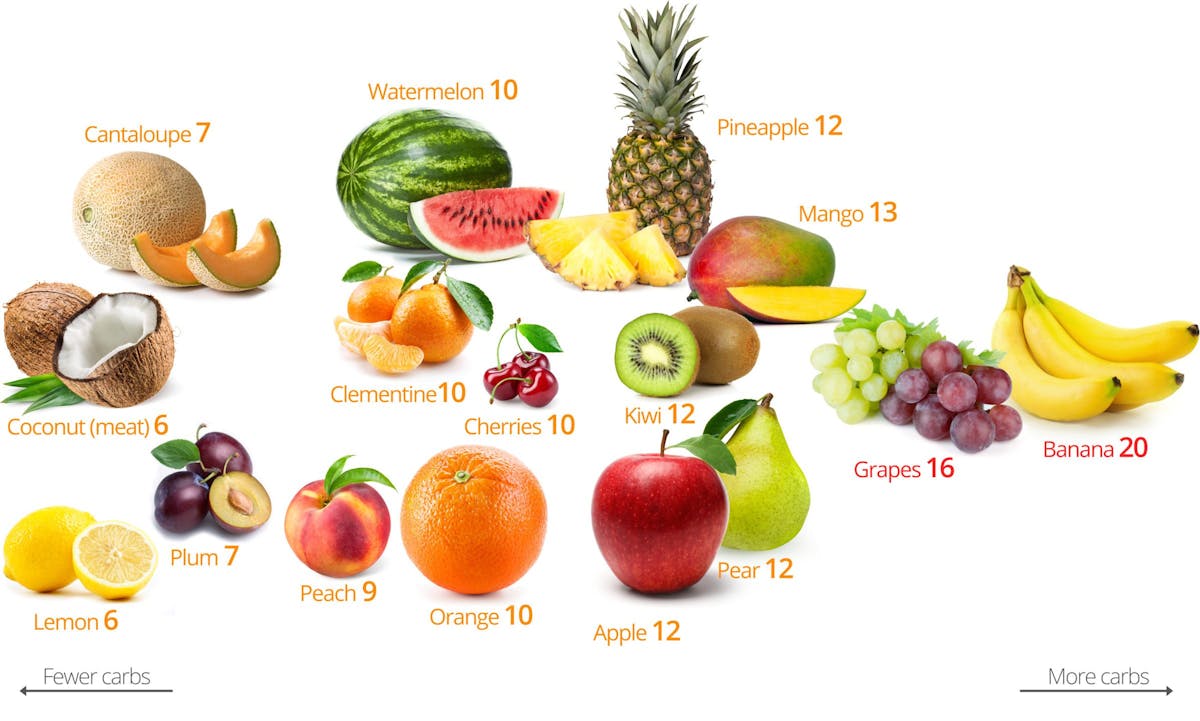
Low-carb fruits and berries – the best and the worst
What are the best and the worst fruits and berries to eat on a low-carb diet? Here’s the short version: most berries are OK low-carb foods in moderate amounts, but fruits are candy from nature (and full of sugar). For more details, check out this amazing visual guide, with the lower-carb options to the left.
Fats
On a low-carb vegan diet, some of the best fat sources are:
- Olive oil
- Coconut oil
- Coconut milk
- Coconut cream
- Coconut butter
- Cocoa butter
- Avocado oil
- Macadamia, pecan or other nut oils
- Sesame oil
Miscellaneous foods
- Dark chocolate: (read ingredients labels to check for dairy)
- Nuts and seeds: (provide a small amount of protein and variable amounts of carbs)
- Plant protein powders (pea, seed, brown rice, or combination), unflavored: 18-24 grams of protein and 1-2 grams of net carbs per serving
- Nutritional yeast: 16 grams of protein and 4 grams of net carbs per 1/2 cup (30 grams)
Foods to avoid
On a low-carb vegan diet, avoid all animal products, such as:
- Meat, chicken, and fish
- Eggs
- Dairy
- Gelatin and collagen
- Most packaged foods (read ingredients labels)
In addition, steer clear of:
- Bread
- Pasta
- Rice
- Cereal
- and the rest of these high-carb foods
Low-carb vegan substitutions
Stay vegan and low carb with our handy replacement list:
Replace
With
Almond milk
Hazelnut milk
Other nut milk
Vegan butter
Aquafaba is a fancy word for the liquid left over after chickpeas (garbanzo beans) are cooked. It’s become very popular in vegan circles because it’s a great sub for eggs in many recipes, like our own vegan mayo (which includes a bonus hummus recipe). It also works well in place of egg whites because it forms stiff peaks when whipped.
With only 2 grams of carbs per 3.5 ounces (100 grams), aquafaba is a good fit for all low-carb diets.
Low-carb vegan meal planning tips and recipes
Here are some suggestions to get you started:
Breakfast:
For an easy tofu scramble: Drain firm tofu and chop into small pieces. Mix in 1/4 teaspoon turmeric and salt and pepper to taste. Sauté tofu in healthy fat for about 10 minutes. In a separate pan, sauté broccoli, kale, or other veggies in healthy fat until done. Transfer food to plate once cooked. Add berries on the side topped with coconut cream yogurt, if you like.
Or try Judy’s fabulous low-carb oatmeal with a scoop of plant protein powder mixed in to meet your protein targets.
Lunch and dinner:
Start with a good protein source: legumes, soy, or a combination of nuts and seeds
Then pair the protein with your choice of vegetable(s). Here are a few ideas:
- Make zucchini fettuccine using olive oil
- Make cauliflower rice using coconut oil
- Craving French fries? Try these oven-baked rutabaga wedges
Vegan recipes
Meeting essential nutrition needs
Compared to people who eat animal products, vegans are at higher risk of vitamin B12 deficiency, as discussed above. Additionally, vegans are at risk of protein, vitamin D, calcium, iron, and zinc deficiencies.21 Low-carb vegans may also have a more difficult time getting the right amounts of omega-3 fatty acids.
While you can meet most essential nutrition needs with food, sometimes supplements are necessary. Whether you need them will depend on your overall diet, the nutrient levels in your body, and any health conditions you may have.
This guide can help you meet your essential nutrition needs on a low-carb vegan diet. Ask your healthcare provider if you have any concerns about getting the nutrition you need.
Dining out
With a bit of planning and prepping, eating a low-carb vegan diet at home is easy!
On the other hand, consuming a nutritious meal when dining out as a low-carb vegan can be a little more challenging.
Here are a few tips for dining out, LCHF vegan-style:
- Salad bar: Pile on greens and other veggies; add tofu (if available) or chickpeas, nuts, and seeds; top with olive oil and vinegar.
- Asian restaurants: Choose stir-fried tofu or tempeh with extra vegetables in place of rice; request that your dish be prepared without added sugar or flour.
- Indian restaurants: Enjoy tofu curry with vegetables; request that your dish be prepared without added sugar or flour.
- Burgers: We think the Impossible Burger (made with soy) and Beyond Burger (made with pea protein) taste remarkably like real burgers. The Impossible Burger is more widely available, appearing on the menu at several restaurants and fast food places, including The Cheesecake Factory, Applebee’s, and Burger King.
Order your burger wrapped in lettuce or over a salad with olive oil and vinegar dressing. Add avocado or guacamole, if available.
Note: While we generally don’t recommend processed products with a long list of chemical additives, these might be okay to include occasionally when dining out. - Quick-serve Mexican restaurants: Eating at Chipotle? Try a delicious Sofritas (soy fajita “meat”) salad with roasted vegetables, guacamole, and salsa. And Qdoba offers “Impossible meat” as a protein option for salads and bowls, along with avocado and several salsas.
You got this!
Although it takes some planning, a healthy low-carb vegan lifestyle is absolutely doable.
The key? Pay attention to your nutrition needs, including getting enough protein at every meal. If you do this, you may be able to eat vegan low carb forever.
Taking a vitamin B12 supplement is a must for all vegans. Depending on your diet, you might need to supplement with other vitamins and minerals or consume fortified foods in order to consistently meet all your nutrition requirements.
As both vegan and low-carb diets continue to grow in popularity, there may soon be additional LCHF vegan options available in grocery stores and restaurants. Until then, return to this page often to help make your low-carb vegan lifestyle nutritious, delicious, and easy to maintain.
Please note
At Diet Doctor, we try to present the strongest scientific evidence currently available, but we understand that you may want to avoid a vegan diet due to personal history, beliefs, or preferences.
If you don’t want to eat a vegan diet, we support your choice.
How to eat low carb as a vegan - the evidence
This guide is written by Franziska Spritzler, RD and was last updated on June 19, 2025. It was medically reviewed by Dr. Michael Tamber, MD on September 14, 2021 and Dr. Bret Scher, MD on September 25, 2022.
The guide contains scientific references. You can find these in the notes throughout the text, and click the links to read the peer-reviewed scientific papers. When appropriate we include a grading of the strength of the evidence, with a link to our policy on this. Our evidence-based guides are updated at least once per year to reflect and reference the latest science on the topic.
All our evidence-based health guides are written or reviewed by medical doctors who are experts on the topic. To stay unbiased we show no ads, sell no physical products, and take no money from the industry. We're fully funded by the people, via an optional membership. Most information at Diet Doctor is free forever.
Read more about our policies and work with evidence-based guides, nutritional controversies, our editorial team, and our medical review board.
Should you find any inaccuracy in this guide, please email andreas@dietdoctor.com.
Journal of the American College of Cardiology 2017: Healthy plant-based diet: what does it really mean? [editorial; no evidence] ↩
Appetite 2017: Vegetarian on purpose: Understanding the motivations of plant-based dieters [review article; ungraded] ↩
Several studies have shown that when people cut back on carbs but are allowed as much protein and fat as they need to feel full, they end up automatically eating less:
Journal of the American Medical Association 2007: Comparison of the Atkins, Zone, Ornish, and LEARN diets for change in weight and related risk factors among overweight premenopausal women. The A to Z weight loss study: a randomized trial [moderate evidence]
Annals of Internal Medicine 2014: Effects of low-carbohydrate and low-fat diets; a randomized trial [moderate evidence]
Journal of the American Dietetic Association 2005: Perceived hunger is lower and weight loss is greater in overweight premenopausal women consuming a low-carbohydrate/high-protein vs high carbohydrate/low-fat diet [moderate evidence]
Annals of Internal Medicine 2005: Effect of a low-carbohydrate diet on appetite, blood glucose levels, and insulin resistance in obese patients with type 2 diabetes [non-randomized trial; weak evidence] ↩
Obesity Reviews 2016: Impact of low-carbohydrate diet on body composition: meta-analysis of randomised controlled studies [strong evidence]
Diabetes Research and Clinical Practice 2018: Effect of dietary carbohydrate restriction on glycemic control in adults with diabetes: A systematic review and meta-analysis [strong evidence] ↩
American Journal of Lifestyle Medicine 2017: Food revolution [overview article; ungraded] ↩
Archives of Internal Medicine 2009: The effect of a plant-based low-carbohydrate (“Eco-Atkins”) diet on body weight and blood lipid concentrations in hyperlipidemic subjects [randomized trial; moderate evidence] ↩
BMJ Open 2014: Effect of a 6-month vegan low-carbohydrate (‘Eco-Atkins’) diet on cardiovascular risk factors and body weight in hyperlipidaemic adults: a randomised controlled trial [moderate evidence] ↩
Amino Acids 2018: Protein content and amino acid composition of commercially available plant-based protein isolates [laboratory study; ungraded] ↩
Although the quality of protein in different legumes varies, many appear to be about 20-50% less digestible than animal protein:
Food Science and Nutrition 2017: Determination of the protein quality of cooked Canadian pulses [mechanistic study; ungraded]
Food and Agriculture Organization of The United Nations 2011: Dietary protein quality evaluation in human nutrition [overview article; ungraded]
Nutrients 2019:
The role of the anabolic properties of plant- versus animal-based protein sources in supporting muscle mass maintenance: A critical review [overview article; ungraded] ↩This is based on the consensus of the US and Canadian dietetic associations:
Journal of the American Dietetic Association 2003: Position of the American Dietetic Association and Dietitians of Canada: Vegetarian diets [consensus statement; ungraded] ↩
In this case, height is a proxy for reference body weight. Reference body weight is a way of estimating how much lean body mass a person of a specific height would have and thus how much protein they need on a daily basis. You can look up your reference body weight here or use the simple chart below to estimate your protein needs. ↩
The American Journal of Clinical Nutrition 2015: Defining meal requirements for protein to optimize metabolic roles of amino acids [overview article; ungraded] ↩
Journal of the American Dietetic Association: Moderating the portion size of a protein-rich meal improves anabolic efficiency in young and elderly [mechanistic study; ungraded] ↩
This is based on consistent clinical experience of low-carb practitioners. [weak evidence] ↩
Net carbs, also called digestible carbs, are calculated by subtracting fiber from total carbs. Learn more ↩
In many studies, people who restrict carbs to less than 50 grams per day lose weight and improve their blood sugar control:
The British Journal of Nutrition: Very-low-carbohydrate ketogenic diet v. low-fat diet for long-term weight loss: a meta-analysis of randomised controlled trials [strong evidence]
Nutrition & Diabetes 2017: Twelve-month outcomes of a randomized trial of a moderate-carbohydrate versus very low-carbohydrate diet in overweight adults with type 2 diabetes mellitus or prediabetes [randomized trial; moderate evidence] ↩
European Journal of Clinical Nutrition 2014: The prevalence of cobalamin deficiency among vegetarians assessed by serum vitamin B12: a review of literature [overview article; ungraded] ↩
American Family Physician 2017: Vitamin B12 Deficiency: recognition and management [overview article; ungraded] ↩
Peanuts are technically legumes, but they’re often grouped with nuts because of their similarities. ↩
Mix 1 tablespoon of chia seeds with 3 tablespoons of water; let the mixture sit for 15 to 20 minutes before using. ↩
Journal of the International Society of Sports Nutrition 2017: Vegan diets: practical advice for athletes and exercisers [overview article; ungraded]
Nutrients: Comparison of nutritional quality of the vegan, vegetarian, semi-vegetarian, pesco-vegetarian and omnivorous diet [review article; ungraded]
American Journal of Clinical Nutrition: Health effects of vegan diets [review article; ungraded] ↩
